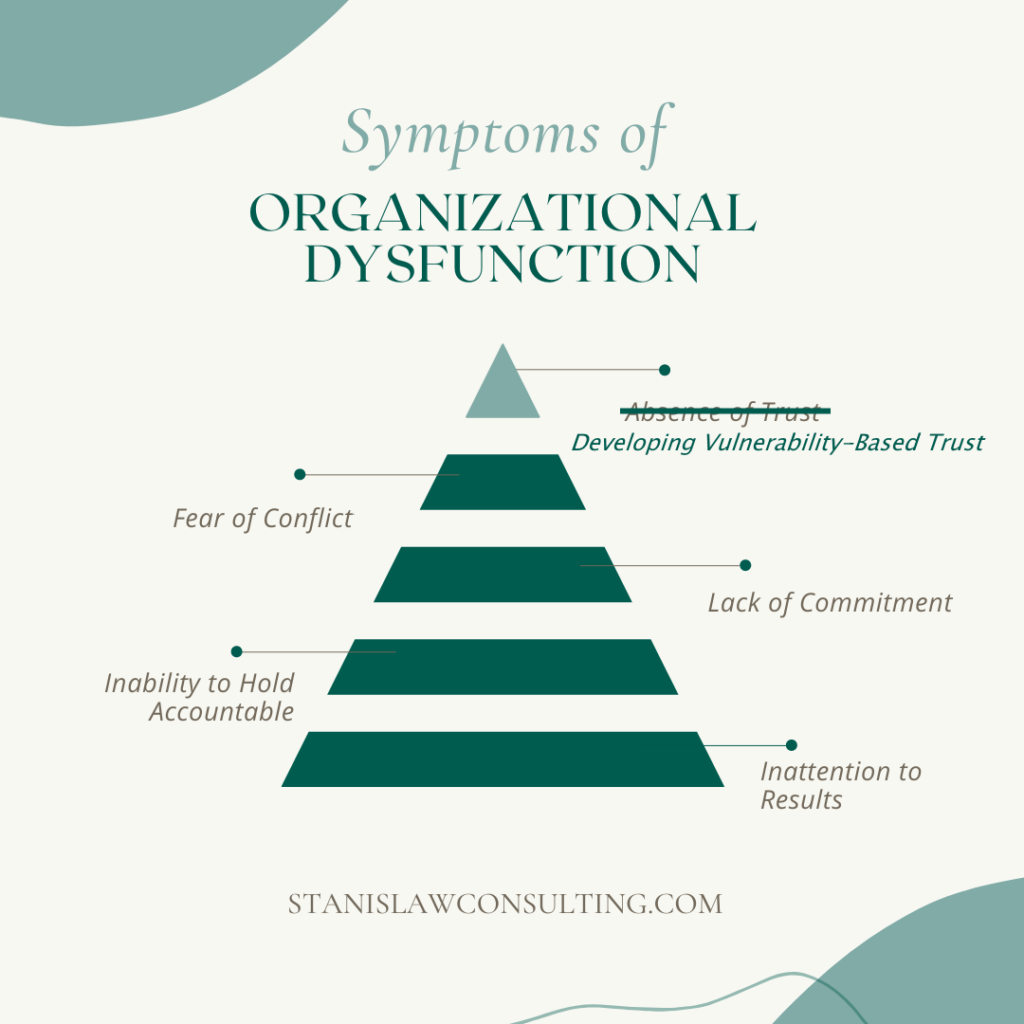Trust lies at the heart of every strong relationship. The connections between team members are no different. Without trust, you and your business can experience substantial organizational dysfunction. However, developing team trust can be the first step to creating a functional workplace culture where everyone is pulling together for the good of the company.
This is the second of a six-part blog series based on the book The Five Dysfunctions of a Team by Patrick Lencioni. You can read the first blog post here. Future blog posts will dive deeper into the remaining 4 symptoms of organizational dysfunction and provide you with tools for treating the symptoms and moving your team toward added productivity.
Get Help with Leadership, Conflict Resolution, and Business Strategy
Talk to a consultant who can help you make strategic decisions about the future of your business.
Does Your Team Have an Absence of Trust?
If your organization has a workplace culture of cutthroat competition or dismissive disregard for others’ ideas, your team may be operating in the absence of trust. When team members are unable to take risks or say hard things without fear that their colleagues will become angry or defensive, they are likely to just keep quiet. That silence is the sign that your team is suffering from an absence of trust.
How a Lack of Trust Can Fuel Organizational Dysfunction
Coworkers who can’t trust each other must look out for themselves first. But by keeping their heads down and focusing on themselves, your employees aren’t really working as a team at all. If your team are all quietly doing their work without question, your company is missing out on the benefits the answers to those unspoken questions may hold. That can allow organizational dysfunction to fester and grow as no one points out the weaknesses inherent in the system or the team leader’s ideas.
Developing Team Trust by Modeling Vulnerability
This lack of trust is often based on a fear of vulnerability. Your team may worry that if they are “the weakest link” their time with the company may be cut short. In reality, everyone has weaknesses (and strengths) that affect their ability to do their work. Effective team management involves acknowledging those weaknesses and providing support, rather than using them as an opportunity to cut team members down.

Vulnerability must start from the top. If you, as an organizational leader, openly admit your weaknesses and ask for help bridging the gaps, your team members will follow your example. In a team meeting, you might encourage each person to describe one weakness and one strength the bring to the team. By modeling vulnerability, and committing to helping coworkers meet their needs, you can help your team members develop trust. They will come to believe that they can offer their opinion without fear of judgment – that they don’t have to be perfect to contribute. It starts with publicly recognizing your team members’ strengths and your own weaknesses.
If a team member is struggling, approach them privately, acknowledge the objective facts around the weakness (i.e. that they didn’t make their sales goals the week before), and ask how you can support them in the future. Don’t call them out on their weakness publicly first. Instead, open a dialog about their experiences and listen to their needs. Then, once you have a plan, bring it to the team and ask them to provide the needed support.
Get Help Building Trust to Overcome Organizational Dysfunction
Changing workplace culture isn’t easy, and trust can be difficult to earn. If you are facing a long history of organizational dysfunction, your team will not change course overnight. Instead, you will need the help of a resourceful and emotionally intelligent facilitator to help you develop new patterns of communication and learn the power of vulnerability. Once you and your coworkers develop team trust, you can take the next step to overcoming organizational dysfunction: encouraging healthy conflict.
David Stanislaw is an organizational development specialist with over 25 years’ experience in resolving organizational dysfunction. Through business consulting and facilitation, David helps businesses and teams improve productivity and team cohesion. Contact us to meet with David to move toward high organizational functioning today.


Recent Comments